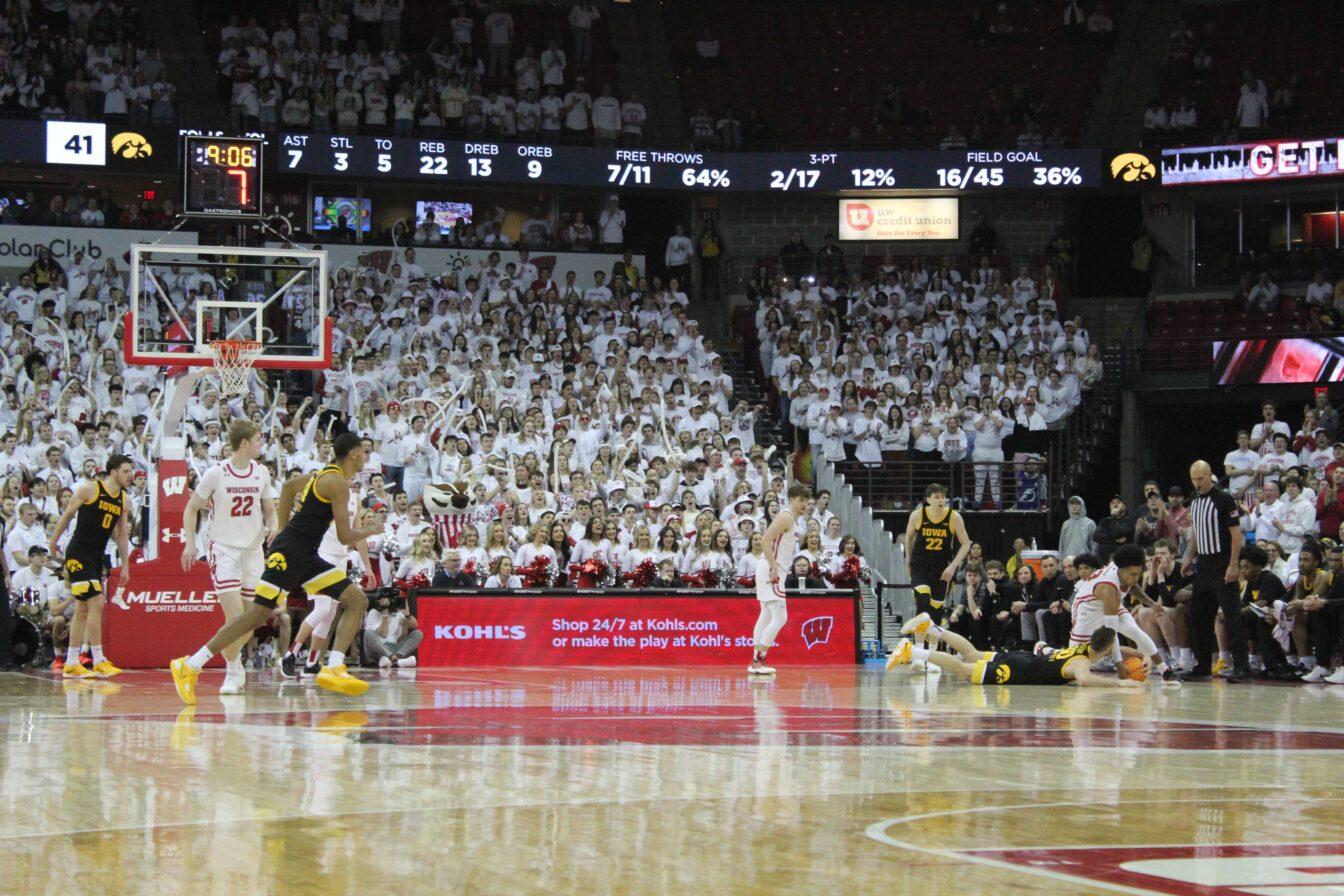As the 2022-2023 college basketball season concludes, there seems to be a general consensus among fans, students and faculty that the overall atmosphere and energy from the crowd in the Kohl Center was subpar this season.
Aside from an impressive postseason tournament run in the NIT, the Wisconsin’s men’s basketball program had a rather underwhelming season. They were not selected in the field of 68 for the NCAA tournament and finished 11th in the Big Ten standings.
Some could point to the regular season performance as a culprit for the low energy, but considering how consistent and competitive the program is, coupled with how passionate of a college sports town Madison is, this should never be an excuse for lack of support.
Some blame alumni and regular admission, specifically in the lower bowl, for not bringing enough energy and support. Others argue that the “AreaRED” student section was lacking its usual liveliness.
Men’s Basketball Director, Ben McLenaghan, weighed in on the issue and what the main causes may be.
“It’s very easy to put the blame on one group of people, but at the end of the day it’s a collective issue,” he said. “One thing I can pinpoint that would help all parties is for a culture shift to happen. Right now I would consider [Wisconsin] as more of a football school. We don’t have a culture that is strongly built around basketball, and that seems to be the biggest difference between us and other schools in the conference like Purdue or Michigan State.”
While there isn’t a solution to get fans to cheer louder or more passionately, one aspect that could be assessed is attendance. In the 17 games played at the Kohl Center this year, the average attendance per game was 13,288. This is a sizable drop-off from last year, where the average attendance per game was at 16,505.
A straightforward solution to get more seats filled would be to reduce the price of tickets. If the team is noticeably struggling, this is a sacrifice that could prove beneficial.
However, total attendance may not exist as a direct contributor to the lack of energy in the arena. There were a few instances throughout the season in which an abundance or shortage of fans seated in the lower and student sections is what determined the overall energy level.
“It’s a quality over quantity thing sometimes,” McLenaghan said. “Over the winter break games, there was a large overall attendance but there were no students, making it a dry atmosphere. There was also the Rutgers game which directly conflicted with Lily’s Classic (an annual hockey tournament fundraiser), leaving AreaRED nearly empty.”
A contrary example would be the final home game of the year, in which the Badgers hosted the Liberty Flames in the second round of the NIT. Played on a Sunday morning during Spring break, tickets went for a season low, with lower bowl tickets going for roughly $30. This led to a packed lower bowl around the entire arena.
“The NIT game only had an attendance of about 10,000 and many say it was one of the best atmospheres we had all season, so I don’t think total attendance is always a direct contributor to a weak atmosphere,” McLenaghan said.
While the AreaRED student section performed well in terms of attendance, specifically in games where there was a promotion or student giveaway, there is ongoing buzz and concern that the section doesn’t have that strong of an impact compared to other schools throughout the country.
The student section, as it stands, consists of sections 114, 115 and 116, positioned on the lower bowl behind the basket on the East end of the arena. The rest of the student section is scattered above on the 2nd and 3rd levels. The students stranded in these upper sections have minimal impact on the game.
A solution to this problem would be to rearrange the layout of the student section, possibly wrapping it around the lower bowl to fit more students in an area closer to the court. Duke, one of the most prolific college basketball programs of the past 40 years, utilizes this approach. Their student section, known as the Cameron Crazies, wraps all the way around the lower level. This creates a very hostile environment for visiting teams and has helped give Duke a phenomenal home-court advantage.
While this would be rather ambitious to pull off, a simpler solution would be to put another student section behind the basket on the other end of the stadium.
McLenaghan sees this as a more realistic option if the section were to be rearranged.
“For the wrap-around concept, our physical space in the Kohl center may not be conducive for that type of setup, as I imagine it would block some views,” he said. “We saw students on opposite ends at the Kohl Center Classic volleyball game back in September, and that was a really cool arrangement. So that’s a more realistic and feasible solution that I feel could work really well.”
Regardless of what the underlying cause is or who is to blame for this problem, the Badger community and fanbase should come together to find a solution to strengthen the electric Kohl Center atmosphere.


